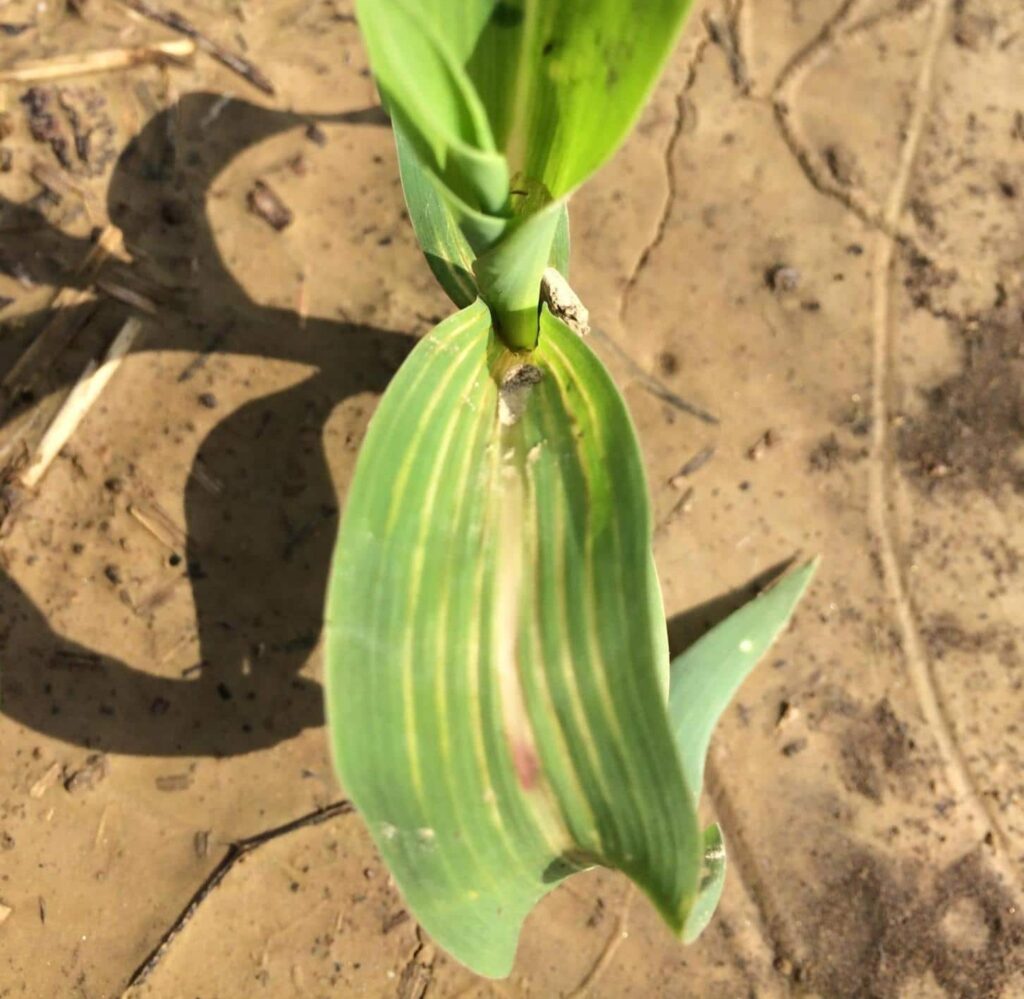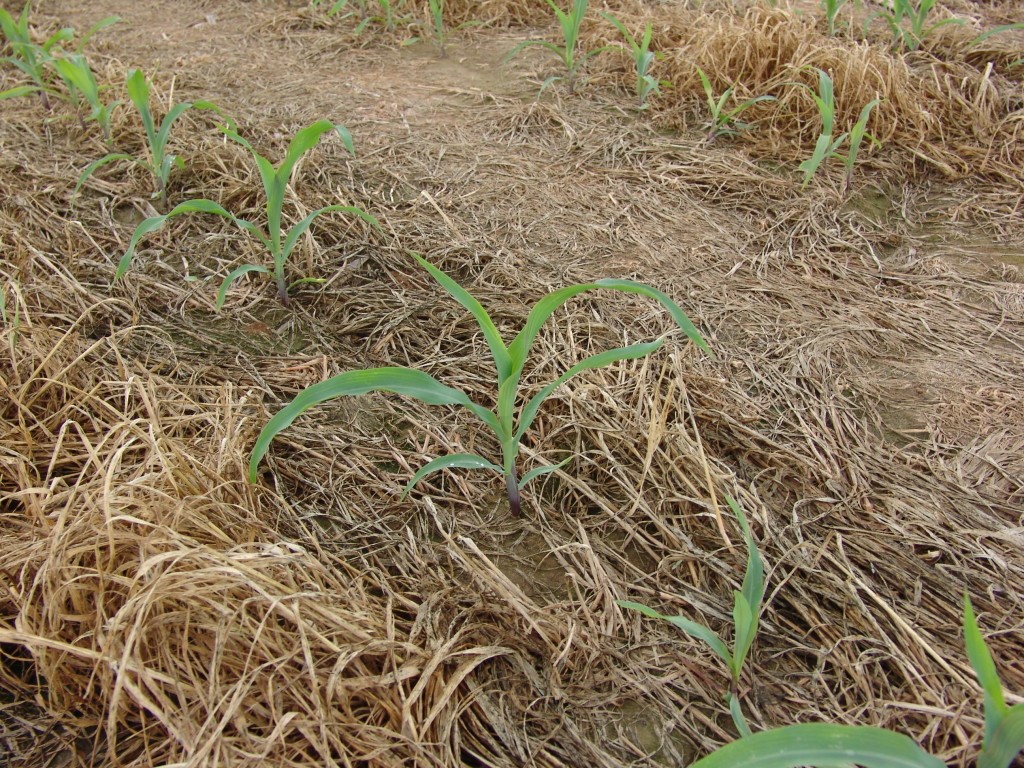Practically every September some growers are dismayed at the vine infestations present at corn harvest. Often, these weed infestations emerged after PRE applied or early POST applied herbicides had played out. They grew very little until August and as the corn dried down and light became more available those established weeds started rapidly growing. Continue reading
Category Archives: Corn
“Hot” Topic – Ear Rots and Mycotoxin Management in Corn
Corn harvest is upon us in Tennessee and we have had a few calls about scouting for ear rots and managing mycotoxins. Continue reading
Is it time to stop irrigating corn?
It’s extremely important to know when to stop irrigating corn crop while considering the best kernel development, quality, and yield. Continue reading
Budworm/Bollworm Catches 7/18
| Location | CEW | TBW |
| Hardeman (Bolivar) | 0 | 0 |
| Fayette (Whiteville) | 0 | 0 |
| Fayette (Somerville) | 1 | 0 |
| Shelby (Millington) | 1 | 0 |
| Tipton (Covington) | 1 | 0 |
| Tipton (North) | 0 | 0 |
| Lauderdale (Golddust) | 16 | 0 |
| Haywood(West) | 12 | 0 |
| Haywood (Brownsville) | 0 | 0 |
| Madison (WTREC) | 107 | 6 |
| Madison (North) | 2 | 0 |
| Crockett (Alamo) | 0 | 0 |
| Crockett (Friendship) | 1 | 0 |
| Dyer (King Rd) | 7 | 0 |
| Dyer (Dyersburg) | 5 | 0 |
| Lake (Ridgely) | 1 | 0 |
| Gibson (Trenton) | 4 | 0 |
| Gibson (Milan Rec) | 0 | 0 |
| Carroll (Coleman Farm) | 2 | 3 |
POST Control of Palmer Amaranth in Corn and Soybean
Last fall there was a notable amount of Palmer amaranth in many corn fields in areas of the state where we had confirmed dicamba resistance. As a result, we have recently conducted some field screens on these pigweed populations to herbicides used in corn and soybean.
Nitrogen loss potential in wet corn fields
From late April and throughout the month of May, many parts of Middle and West TN have received persistent rainfall that is well above the average for this period. These rains have produced persistently wet soil conditions and have coincided with sidedress N fertilizer application where most or all of the recommended N is applied. With this much rain, there is potential for N loss. Continue reading
Fomesafen Carryover into Corn and Grain Sorghum
Carryover injury from fomesafen (Flexstar, Prefix, Reflex, Intimidator, Marvel, Dawn, Rhythm, etc.) is starting to show in a few corn fields. This is because some applications in late June and July in 2023 coupled with a very dry fall allowed the herbicide to persist into winter. Recent rains then allow any herbicide carryover to more completely get into the soil solution.
Fomesafen carryover injury in corn and grain sorghum looks similar. Expect to see stunting and interveinal chlorosis as pictures below sent from crop consultants clearly shows.

Herbicide Corn Maturity Cutoffs
Due to little time and very few good spray days, some corn fields have yet to have their layby application. Corn is putting on a new leaf every 3 days with all the heat and water. Therefore, time is short before it will be too mature to apply many herbicides safely over the top.
How large can corn be before glyphosate could potentially cause injury? The glyphosate label states it can be applied up through the V8 corn growth stage. My experience has been if glyphosate is applied to corn larger than that it can at times cause ears to be barren. This phenomenon is difficult to predict ahead of time as it can vary due to maturity of the corn at application, hybrid and weather.
Crop stage and/or crop height is used to determine the cutoffs for a given herbicide. Often the label states the limits at whichever (crop stage or crop height) comes first. Crop stage can easily be done by counting the number of leaf collars that are fully exposed (Ex: 4 collars = 4 leaf) (Picture below). If tankmixing, cutoff is always determined by the most limiting factor.

Johnsongrass Escaping Glyphosate Burndown
| Postemergence Corn Herbicides | Crop Height Cutoff | Crop Stage Cutoff |
| Accent | 20 inches | 6 leaf |
| Acuron GT | 30 inches | 8 leaf |
| Atrazine (Bicep, Degree Xtra, Acuron, etc.) | 12 inches | – |
| Callisto* | 30 inches (without atrazine) | – |
| Capreno* | 20 inches | 7 leaf (without atrazine) |
| Corvus | 2 leaf | – |
| Dicamba (Clarity, etc.) | 8 inches (1 pt/A) or 36 inches (1/2 pt/A) |
5 leaf
– |
| Distinct | 24 inches | – |
| Glyphosate – RR corn only | 30 inches | 8 leaf |
| Halex GT | 30 inches | 8 leaf |
| Armezon/Impact | – | 8 leaf |
| Laudis | – | 8 leaf |
| Liberty – LL corn only | 24 inches | 7 leaf |
| Diflexx | 36 inches | 10 leaf |
| Realm Q | 20 inches | 7 leaf |
| Resicore | 11 inches | – |
| Resolve Q | 20 inches | 7 leaf |
| Roundup PM – RR corn only | – | 8 leaf |
| Shield Ex | 20 inches | 6 leaf |
| Status | 36 inches | 10 leaf |
| Steadfast Q | 20 inches | 7 leaf |
| Storen | – | 8 leaf |
| 2,4-D | 8 inches | – |
*Note that if atrazine is added to herbicides such as Callisto or Capreno for example, the cutoff would be reduced to 12 inches.


